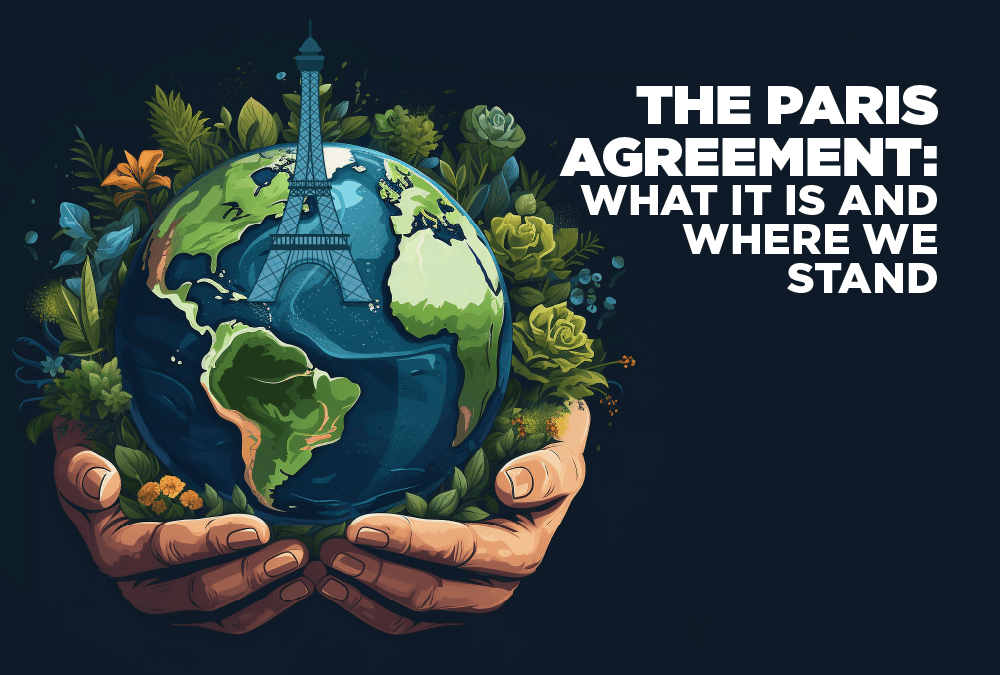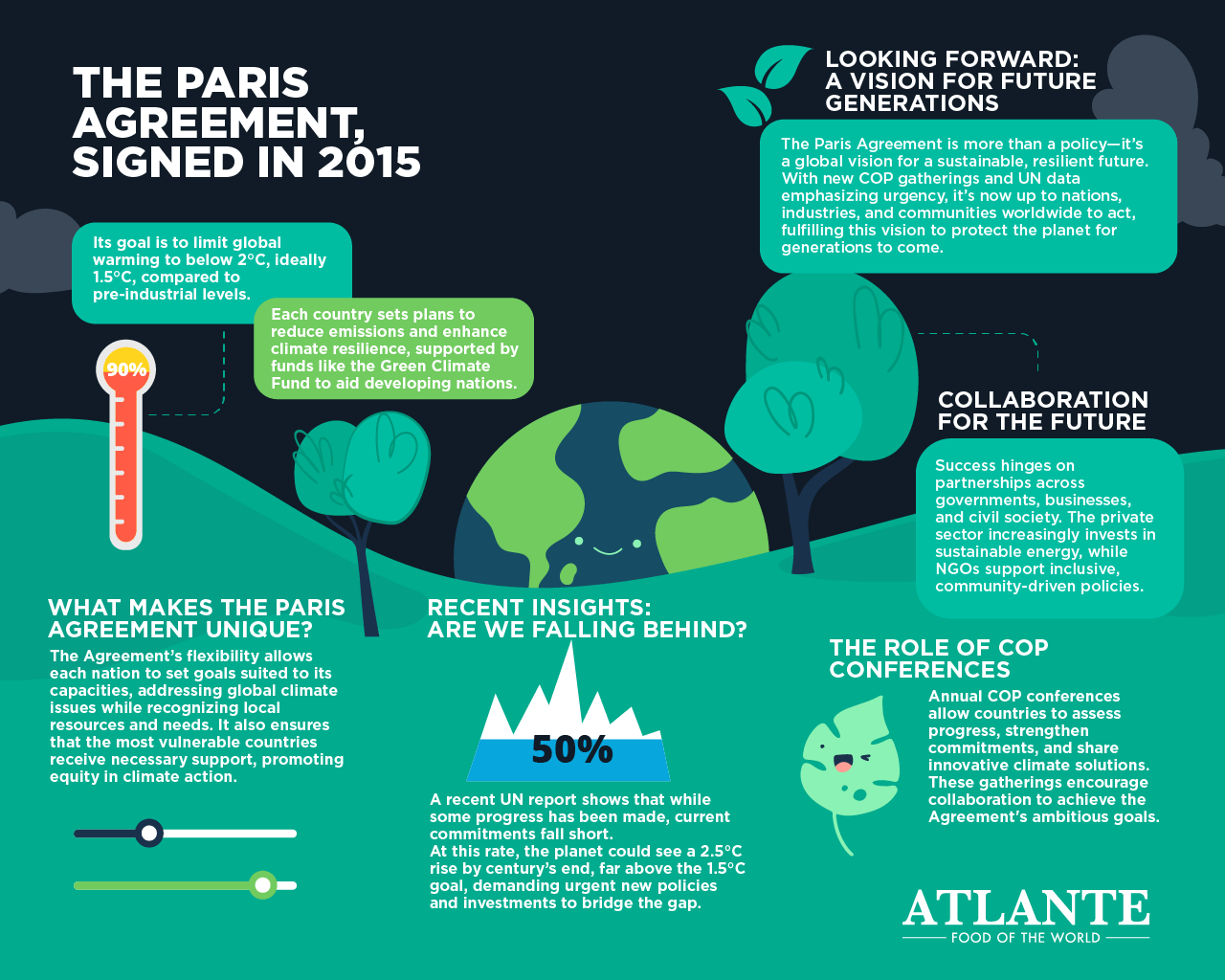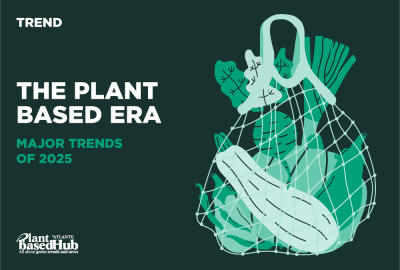Atlante
News
The Paris Agreement: What It Is and Where We Stand

11 November 2024
The Paris Agreement, signed in 2015, marked a pivotal step in global climate action. Its goal is to limit global warming to below 2°C, ideally 1.5°C, compared to pre-industrial levels. Each country sets plans to reduce emissions and enhance climate resilience, supported by funds like the Green Climate Fund to aid developing nations.
What Makes the Paris Agreement Unique?
The Agreement’s flexibility allows each nation to set goals suited to its capacities, addressing global climate issues while recognizing local resources and needs. It also ensures that the most vulnerable countries receive necessary support, promoting equity in climate action.
Recent Insights: Are We Falling Behind?
A recent UN report shows that while some progress has been made, current commitments fall short. At this rate, the planet could see a 2.5°C rise by century’s end, far above the 1.5°C goal, demanding urgent new policies and investments to bridge the gap.
The Role of COP Conferences
Annual COP conferences allow countries to assess progress, strengthen commitments, and share innovative climate solutions. These gatherings encourage collaboration to achieve the Agreement’s ambitious goals.
Collaboration for the Future
Success hinges on partnerships across governments, businesses, and civil society. The private sector increasingly invests in sustainable energy, while NGOs support inclusive, community-driven policies.
Looking Forward: A Vision for Future Generations
The Paris Agreement is more than a policy—it’s a global vision for a sustainable, resilient future. With new COP gatherings and UN data emphasizing urgency, it’s now up to nations, industries, and communities worldwide to act, fulfilling this vision to protect the planet for generations to come.






